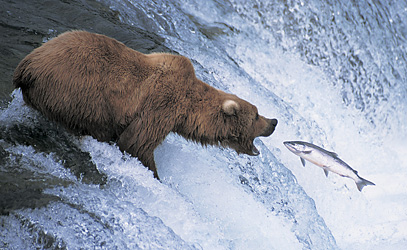
We may receive a commission for purchases made via those links.Ĭache: This page was produced on August 8 at 00:32:19 UTC. That will share some data (like your IP address or details of your device) with them.Īffiliate links: This page links to Apple Podcasts.
#PARK PREDATORS DOWNLOAD#
Privacy: In common with all podcast players, pressing "play" on the inbuilt player above will download the audio directly from the podcast host.
#PARK PREDATORS FULL#
Play full screen, enjoy Puzzle of the Day and thousands. Park Predators is able to use the above tools since its podcast host or measurement company offers this service. Grizzly in Katmai National Park, Alaska puzzle in Animals jigsaw puzzles on. Park Predators may do this for advertising or for other forms of content, like news stories. This form of attribution is used to measure advertising effectiveness.ĭynamic content insertion: Simplecast may use limited data that they know about you - the device you’re using, the approximate location you’re in, or other data that can be derived from this, like the current weather forecast for your area - to change parts of the audio. For example - it may spot a device that downloaded an episode of Park Predators later visited the website of an advertiser or it may track that a device that listened to Park Predators also listened to a different show. Tracking and attribution: Chartable or its partners may connect the fact you listened to this podcast to an action elsewhere on the internet. Simplecast and Chartable are IAB v2 certified. Your device’s IP address and user agent is used to help calculate this figure.

Stats: Statistics are produced by Simplecast and Chartable to help Park Predators to understand how many downloads it is getting, or how many people are listening. This podcast may use tracking and attribution and dynamic content insertion In the Taï National Park, Ivory Coast, we discovered a quite unexpected group of predators preying on foam nests and frog clutches exposed on leaves: monkeys.Hosted by Simplecast and measured by Chartable Few predators have been reported to feed on foam nests, one of which,paradoxically, is a frog (Drewes & Altig 1996). In addition the bubbles of the foam facilitate oxygen diffusion within the nest and may even provide a capacious oxygen store for eggs and hatched tadpoles (Seymour & Loveridge 1994). Their drying surface and their more or less liquid interior offers the tadpoles an aquatic environment that is well protected against desiccation and predation (Duellman & Tropical anuran families, seem to provide better protection. The foam nests,which occur in at least six Such disparate groups as various arthropods (Villa 1977, 1980 Villa & Townsend 1983, Vonesh 2000), frogs (Crump 1974), snakes (Roberts 1994, Scott & Starrett 1974, Warkentin 1995) and birds (Brosset 1967), have been obs.) and are still vulnerable to predation.

The mystery surrounding what happened to him seemed straight forward, until horrific secrets of the camp he loved surface and sent investigators into an entirely new direction. Exposed clutches however, face the risk of desiccation, even in In the summer of 1958 a ten-year-old boy vanished from a Catholic church camp in Rocky Mountain National Park. More or less exposed to vegetation (Duellman & Trueb 1986, Lamotte & Lescure 1977). Most clutches that are oviposited terrestrially are either hidden in subterranean refuges or attached Risk in tropical forests (Duellman & Trueb 1986). It is often associated with higher humidity and thus lower desiccation Times and is presently found in most anuran families (Bogart 1981, Duellmanġ992).

The high predation pressure in aquatic environments is generally assumed toīe the ultimate cause of terrestrial breeding in anurans (Downie 1993,


 0 kommentar(er)
0 kommentar(er)
